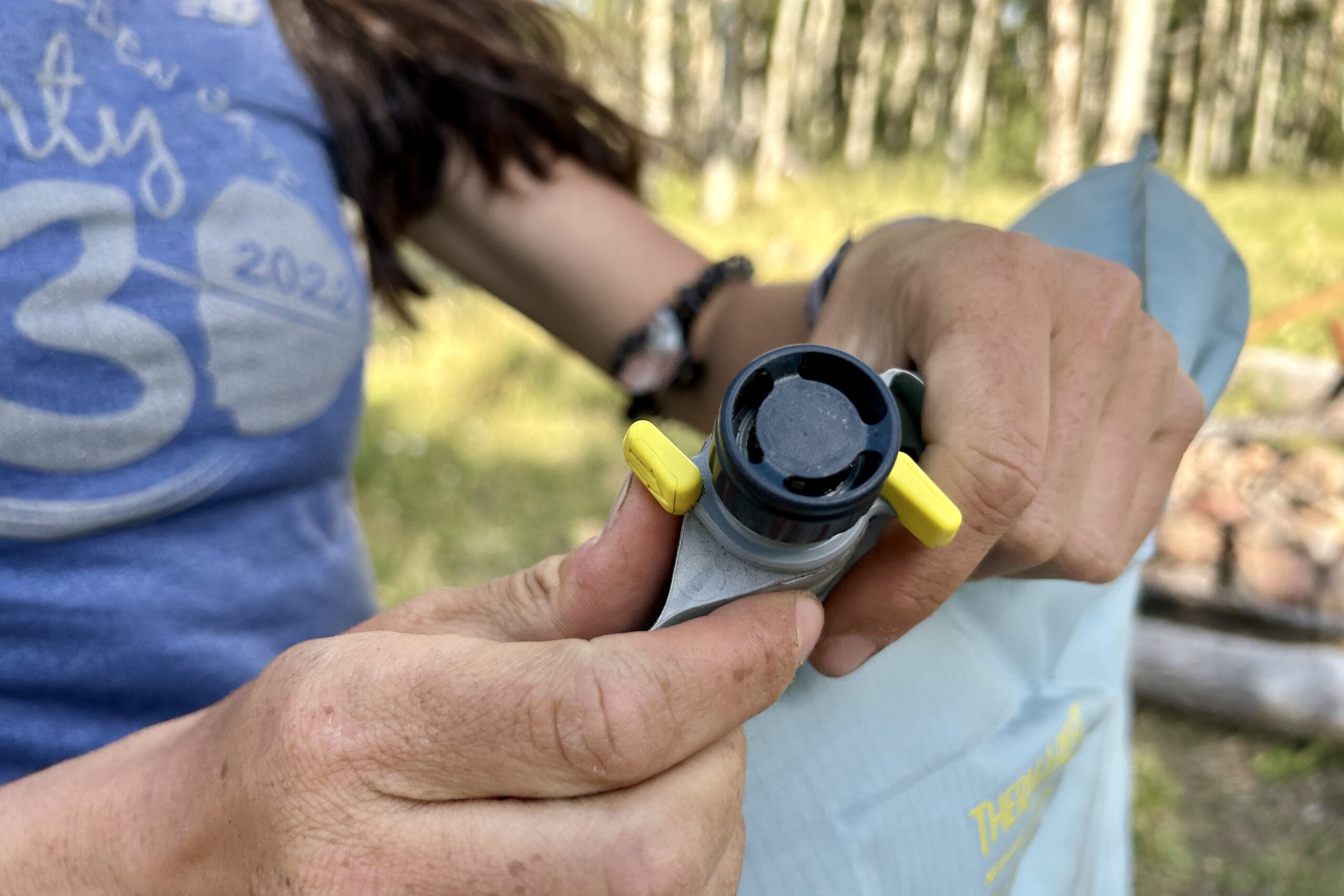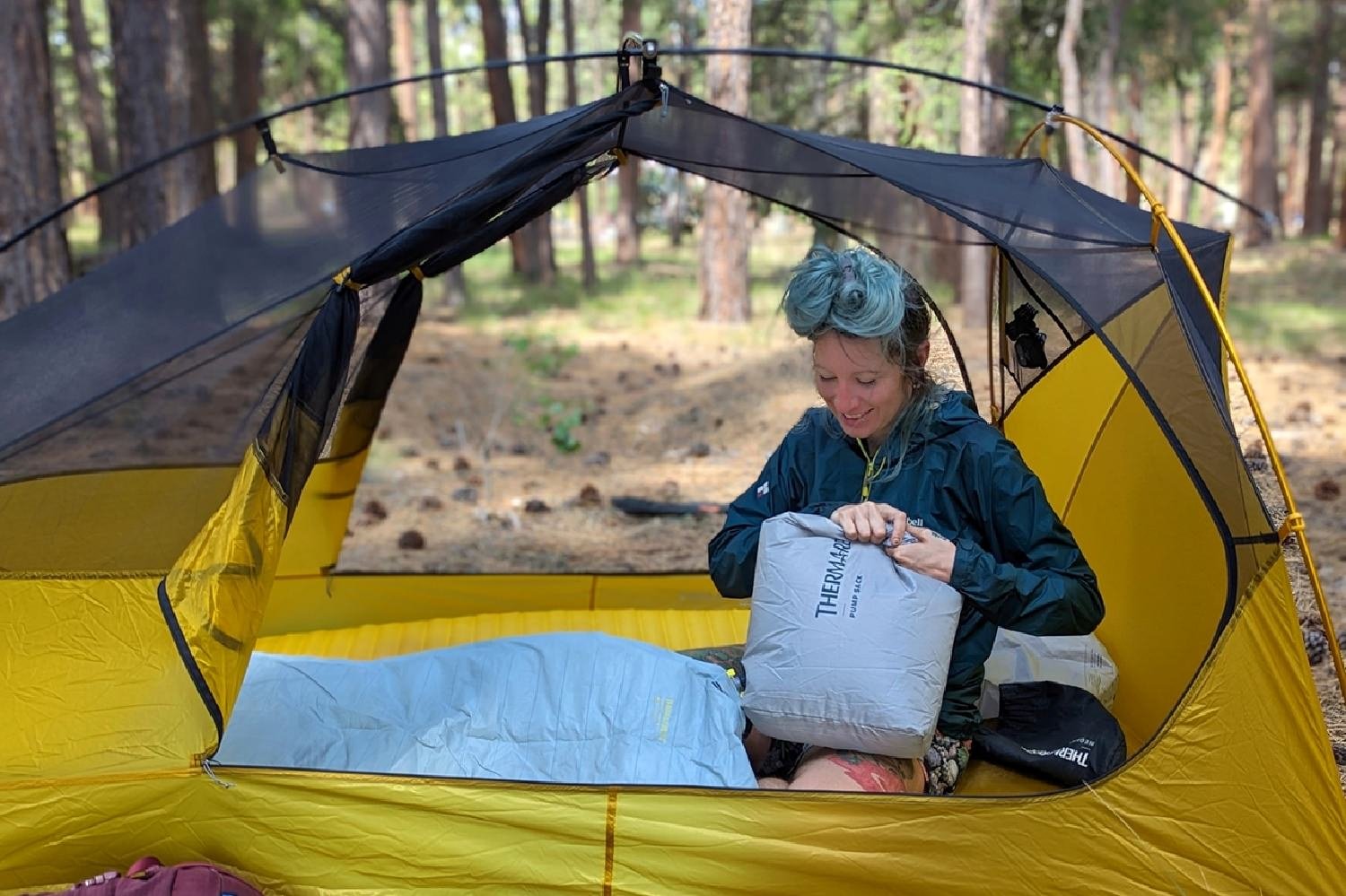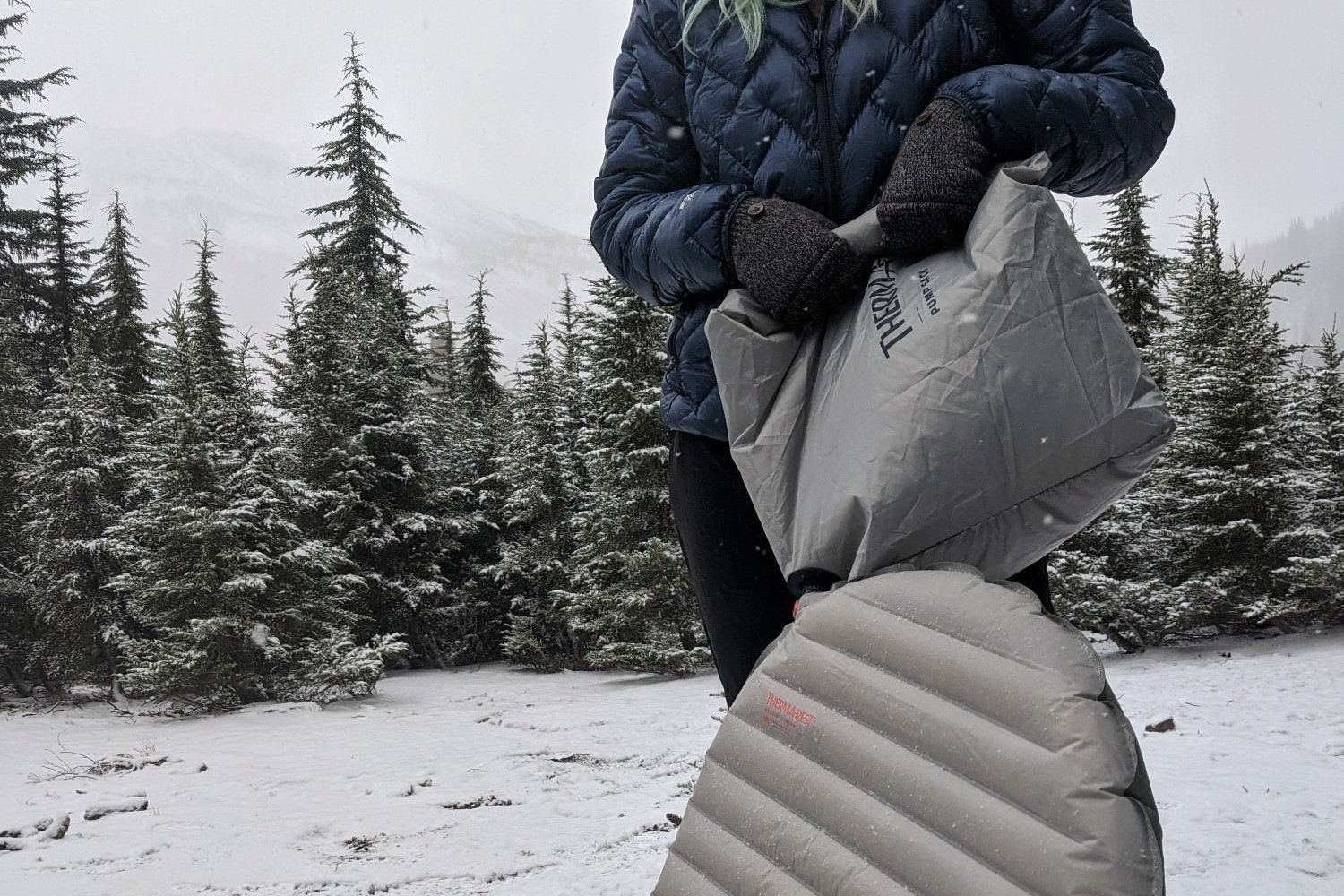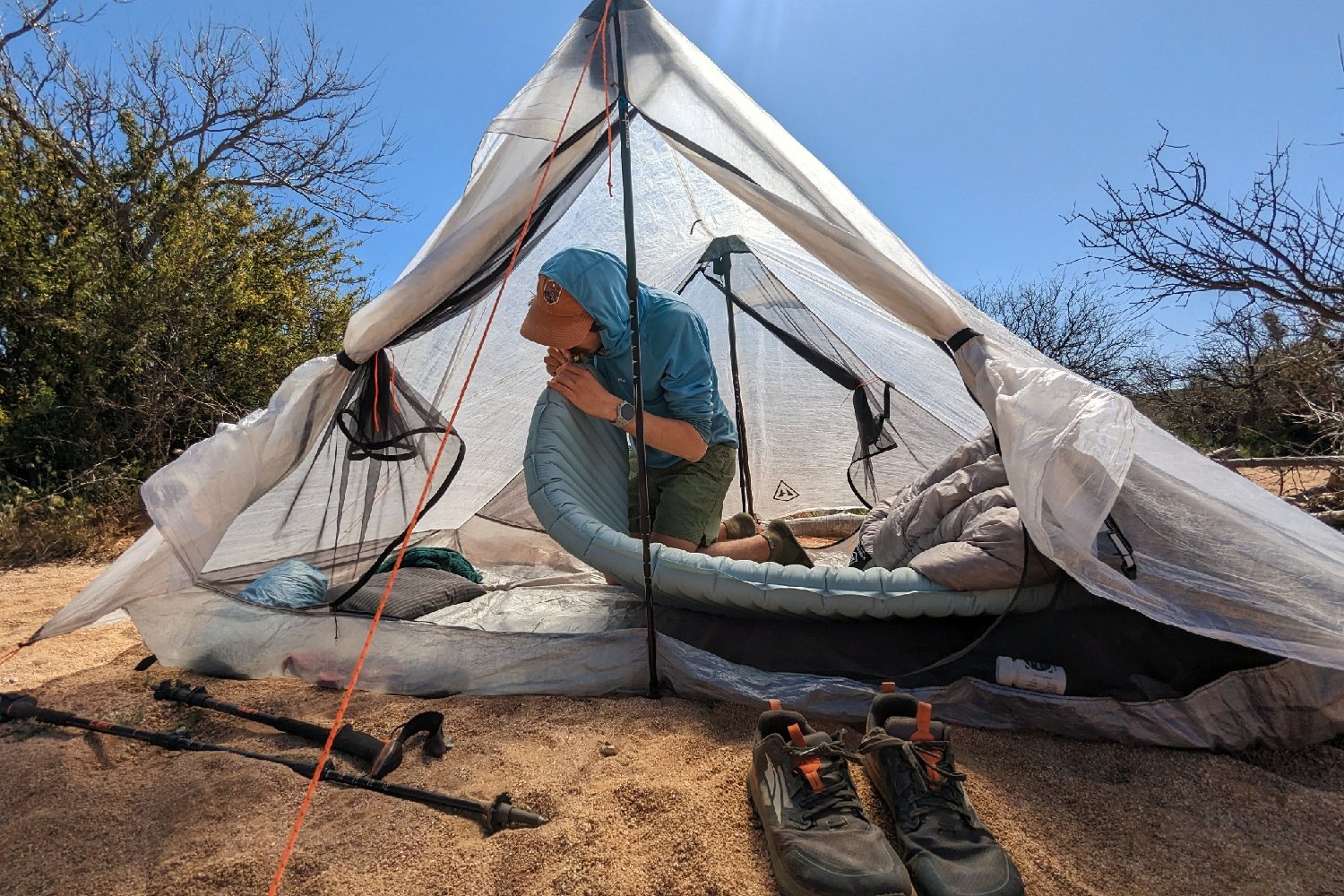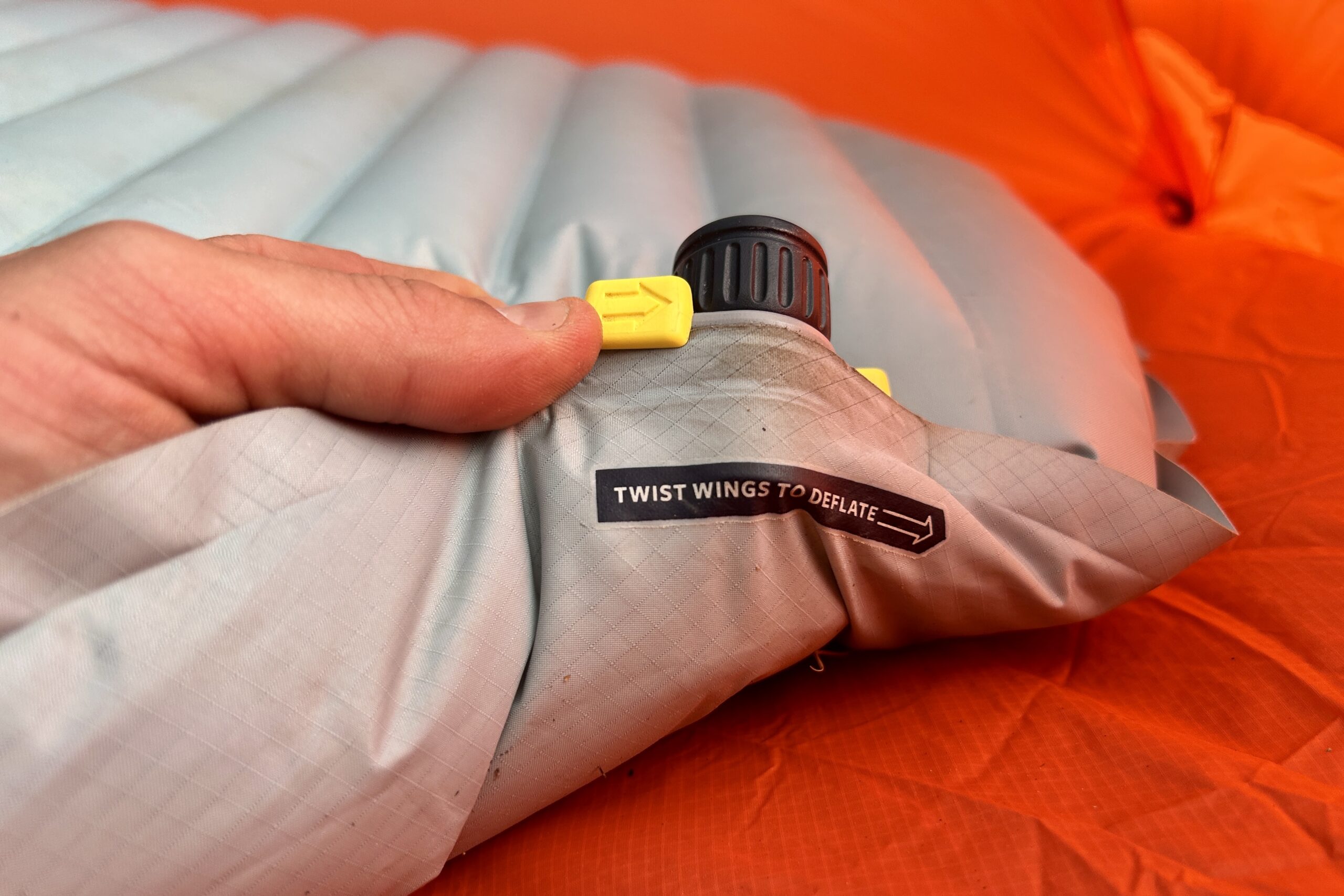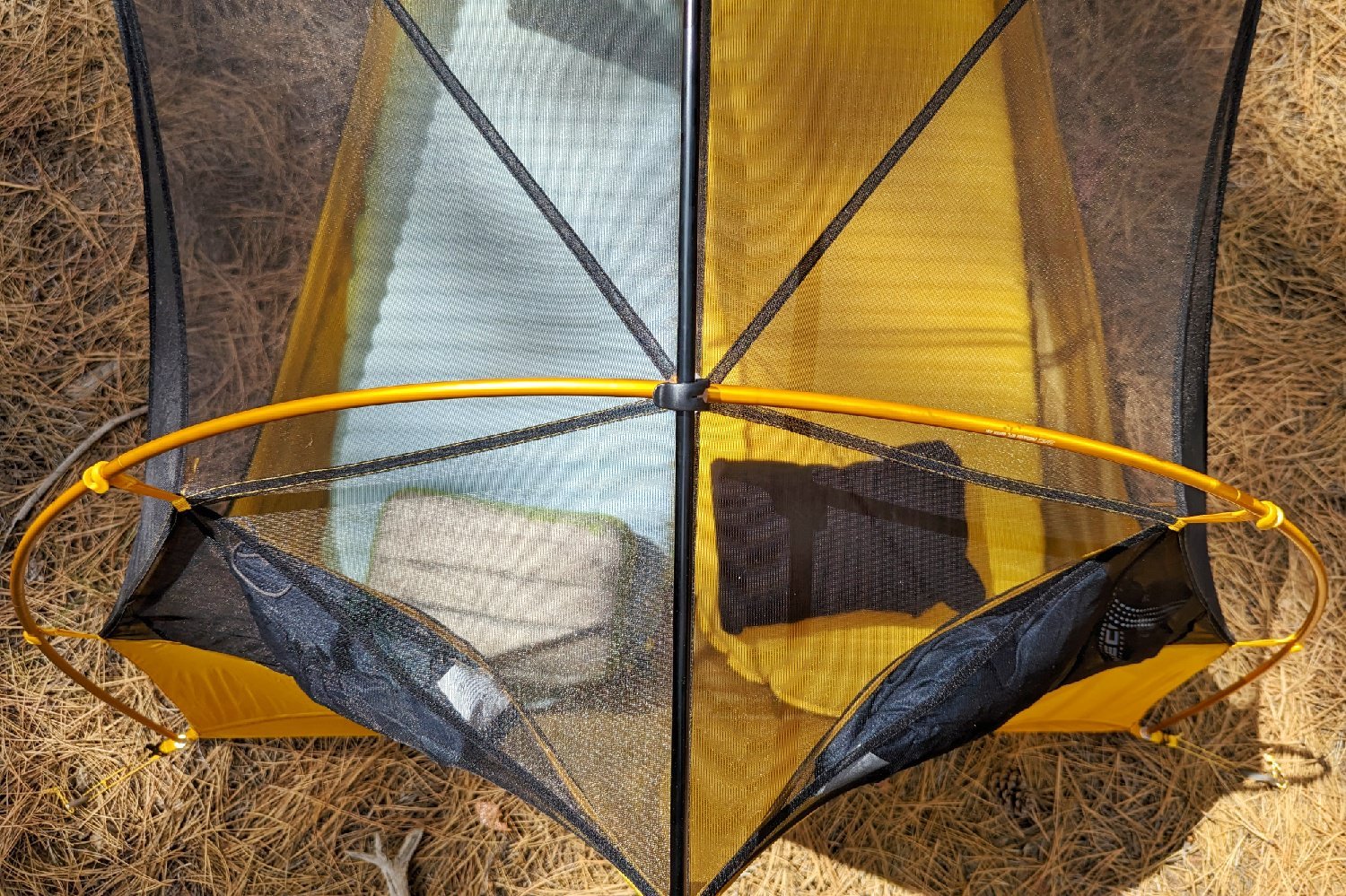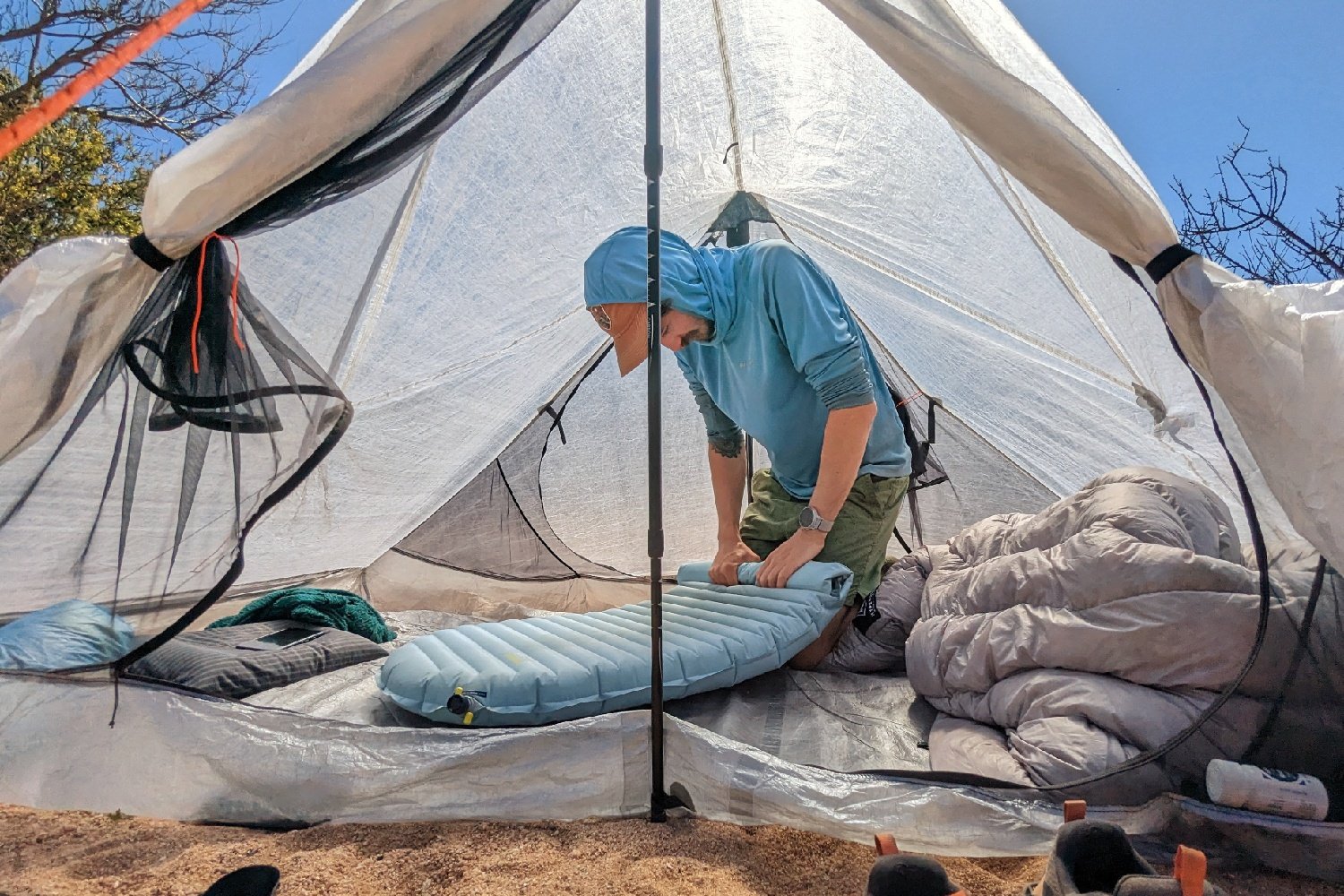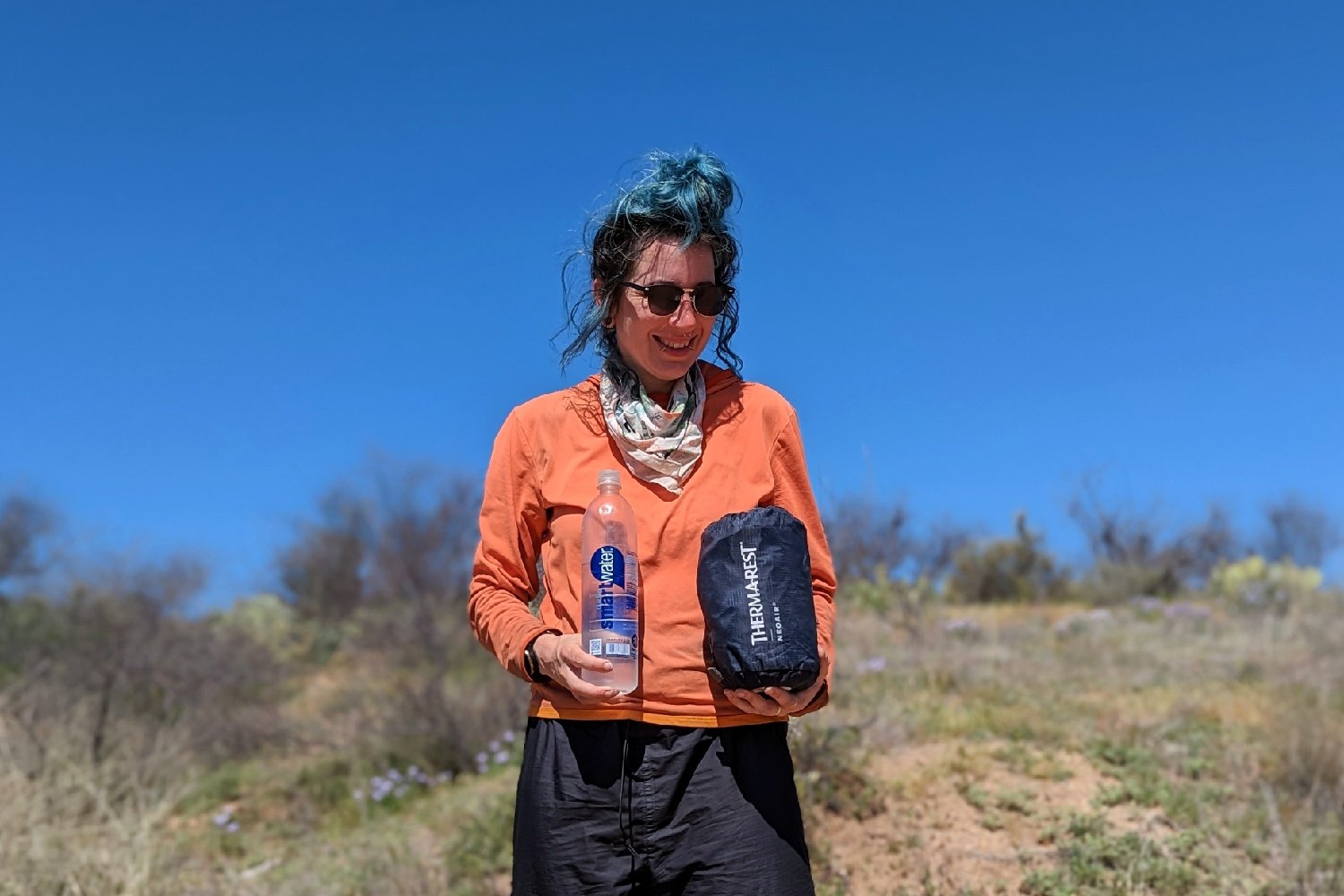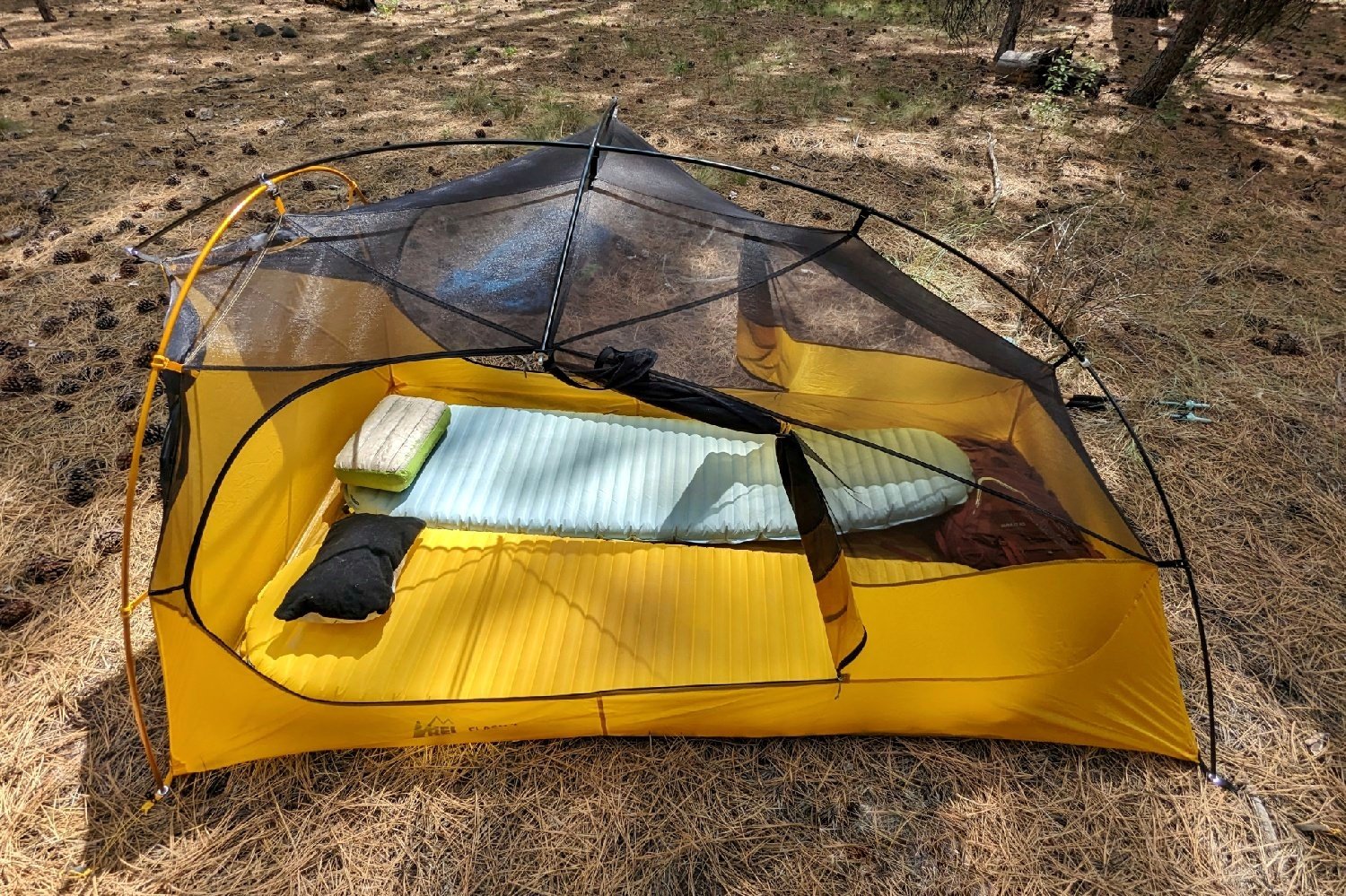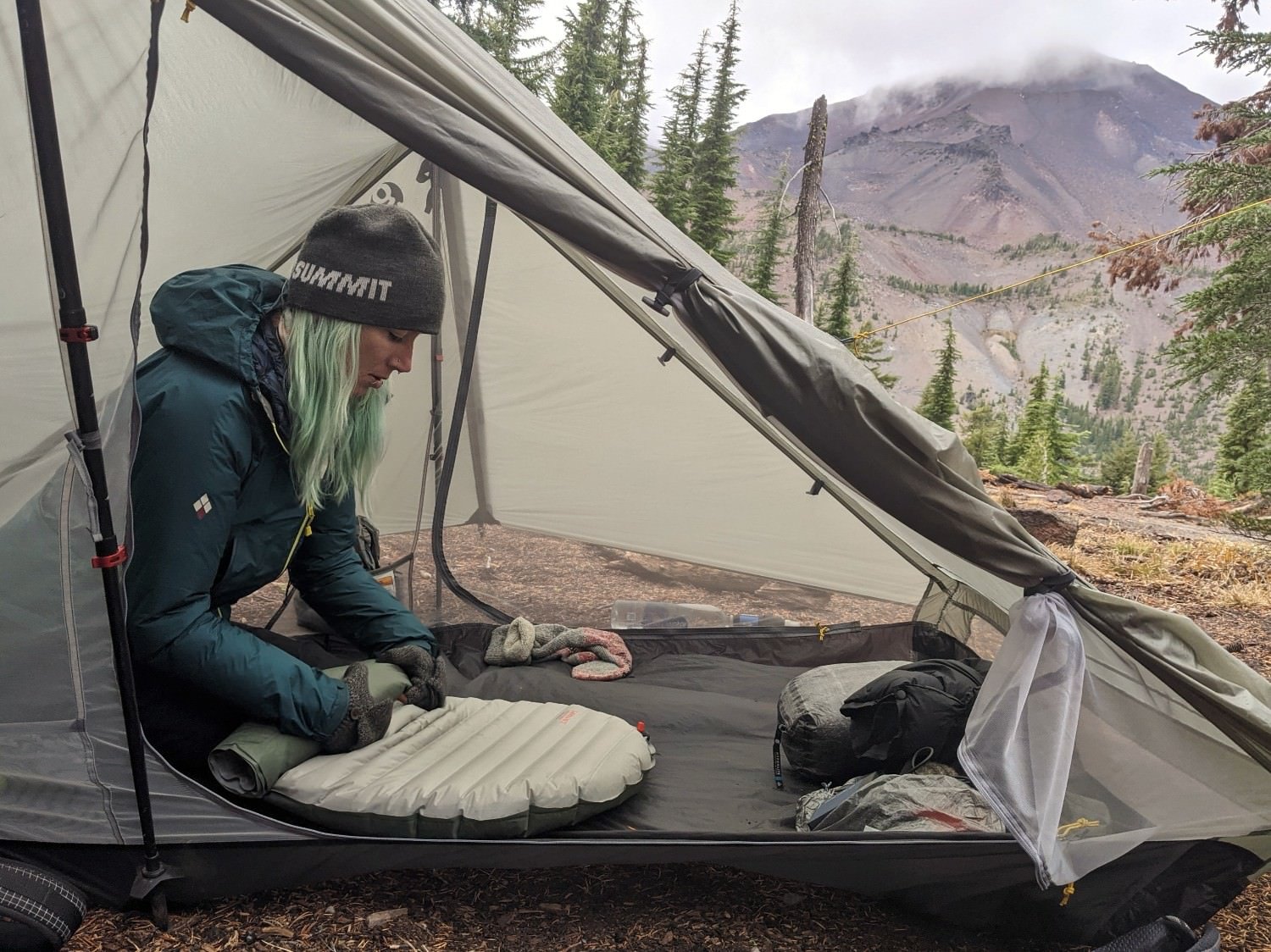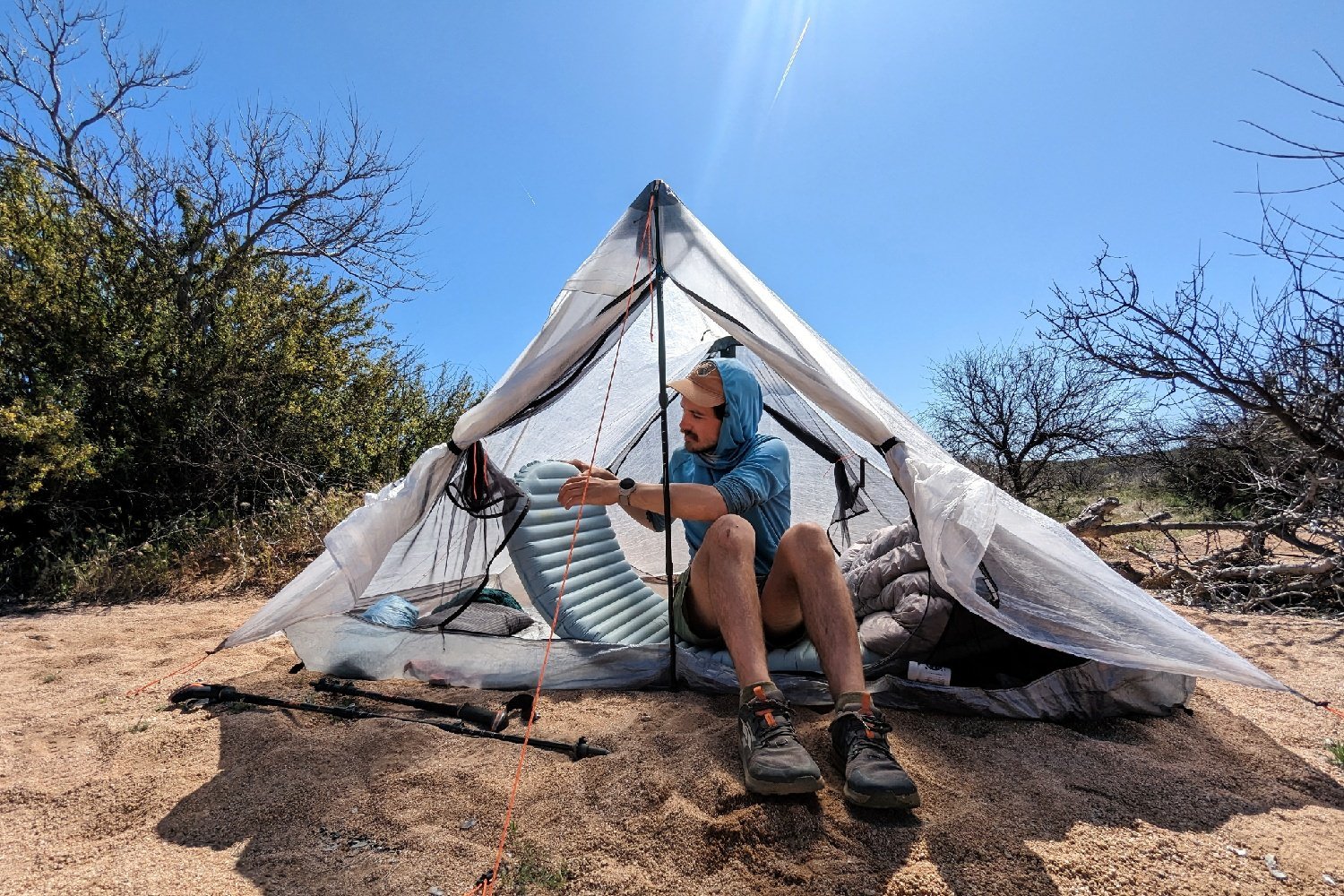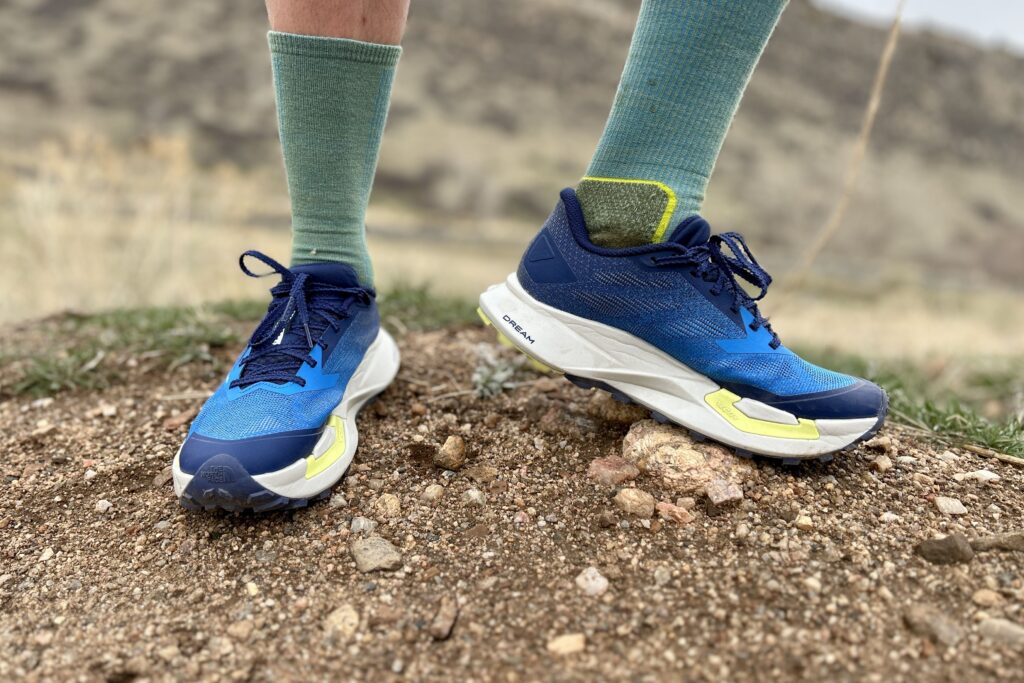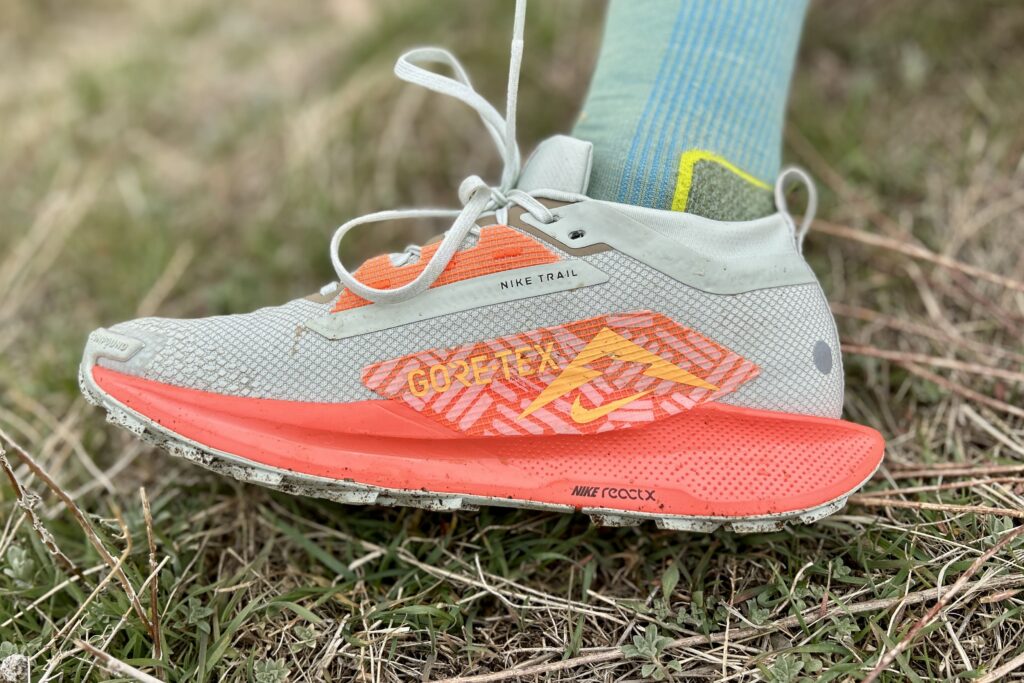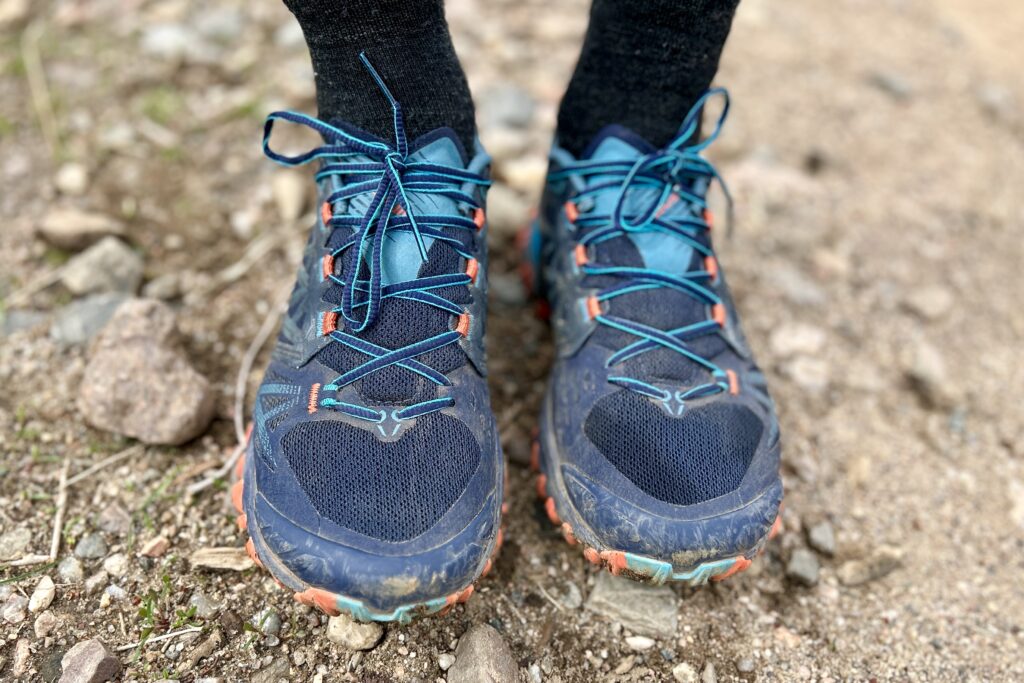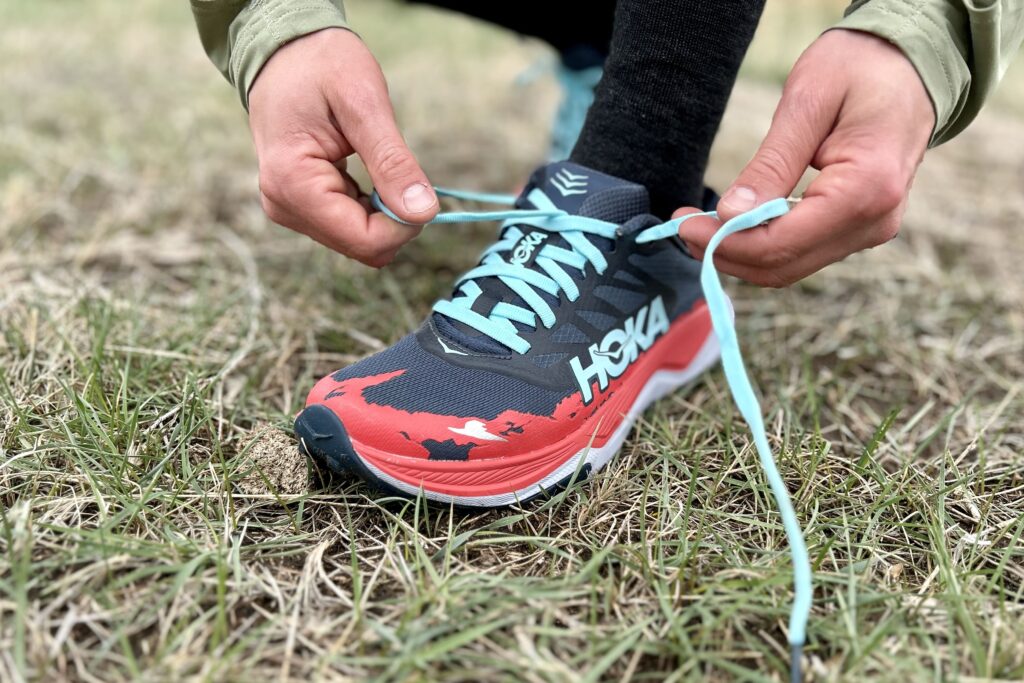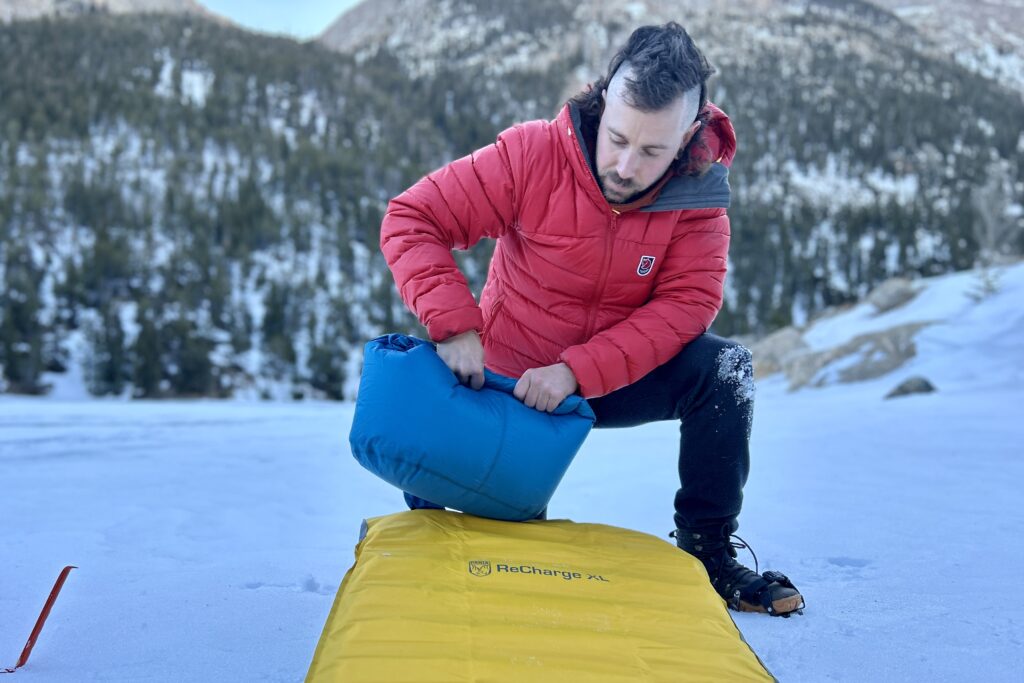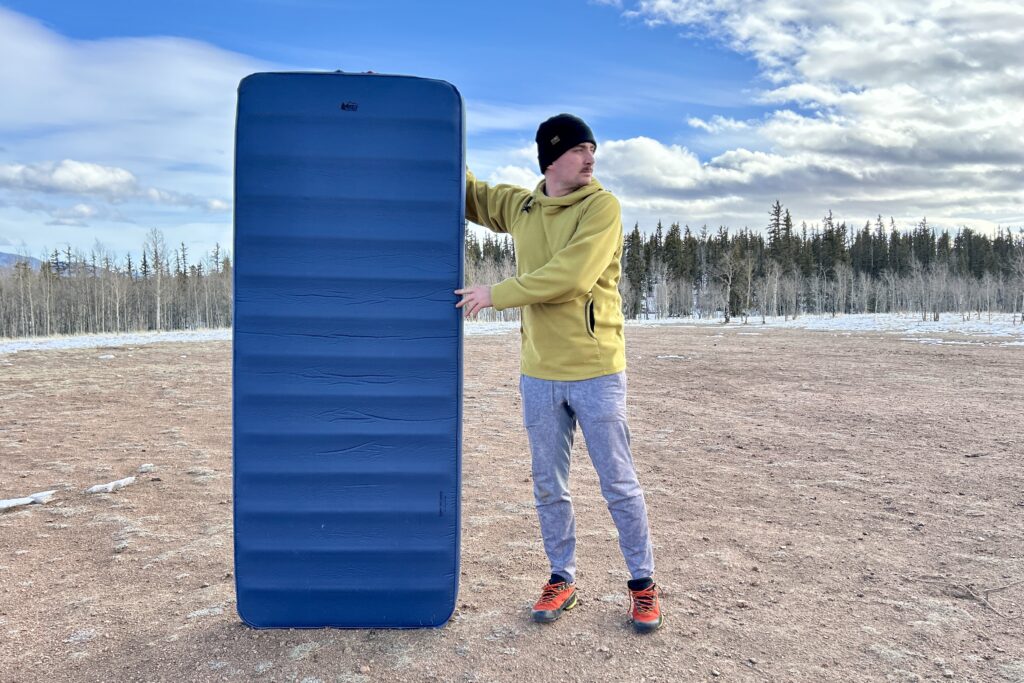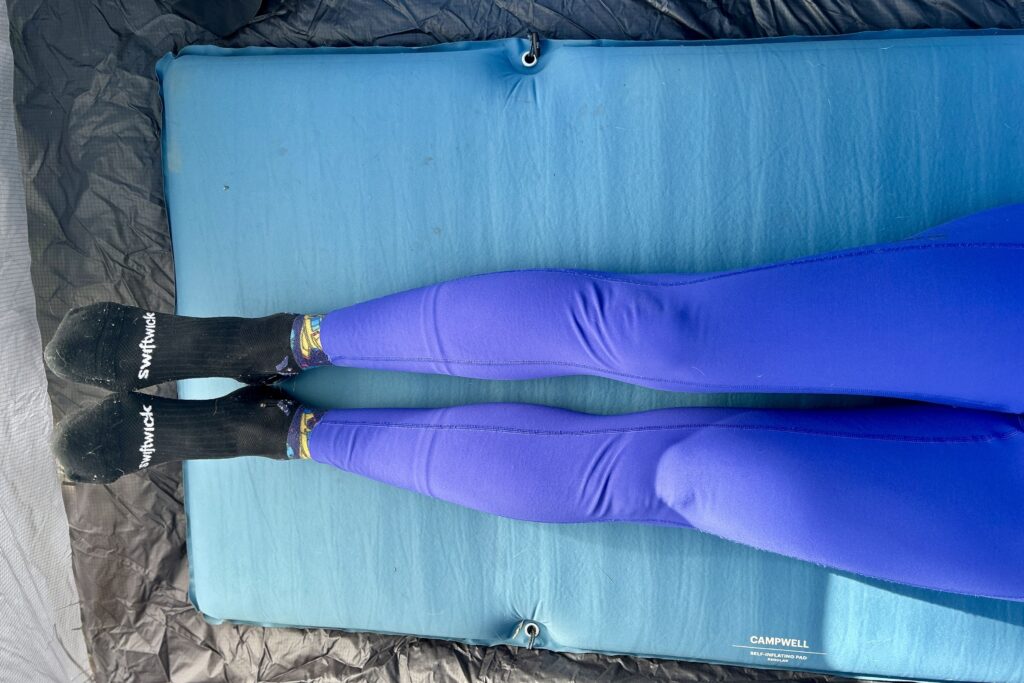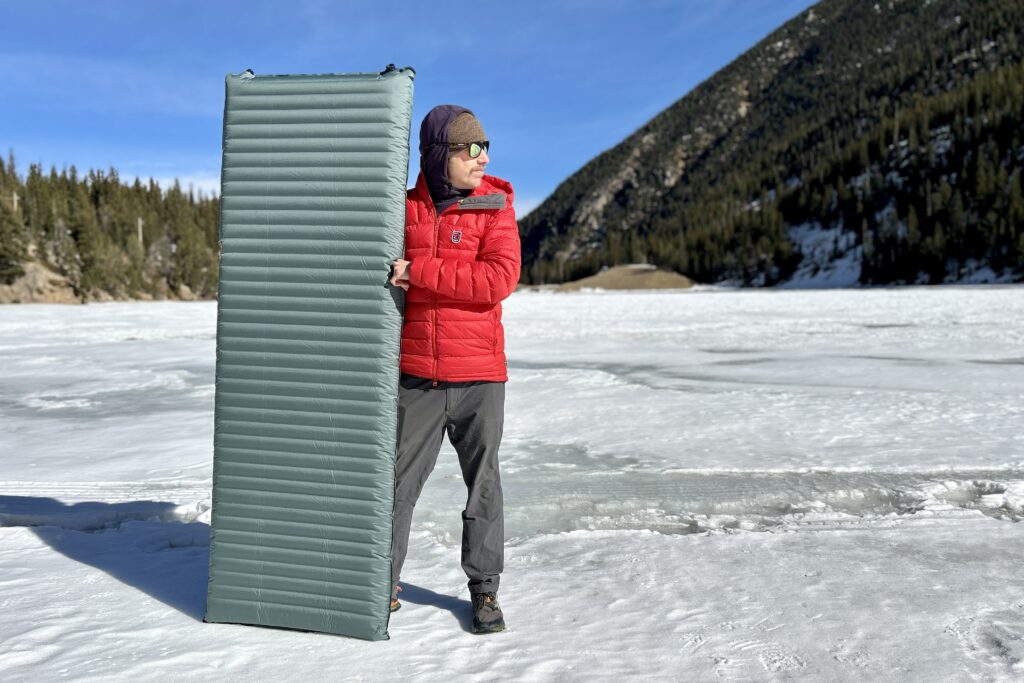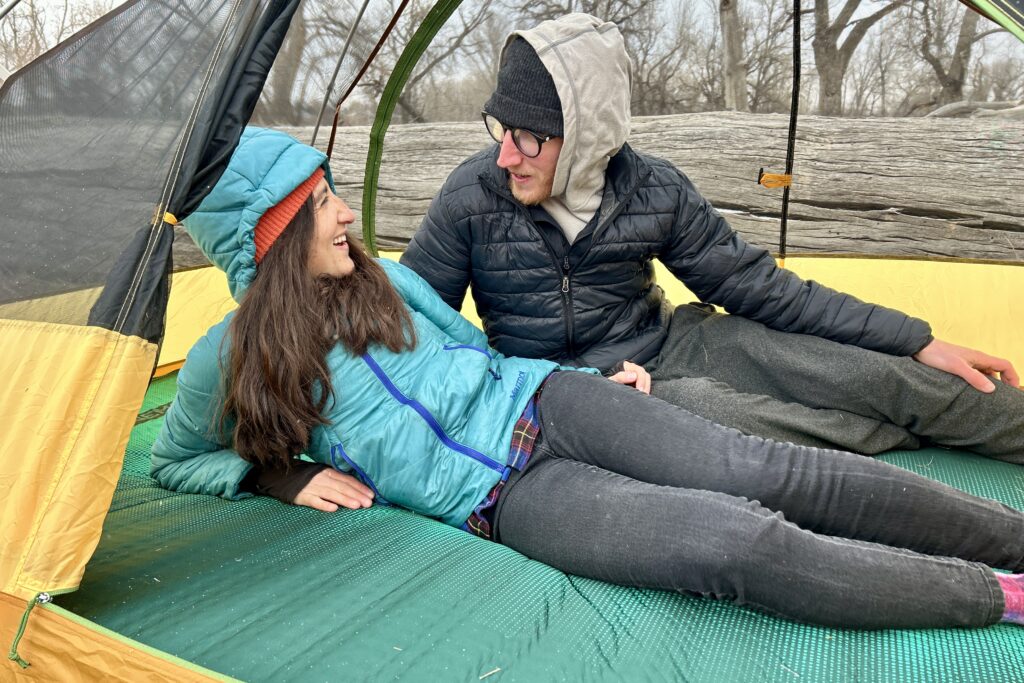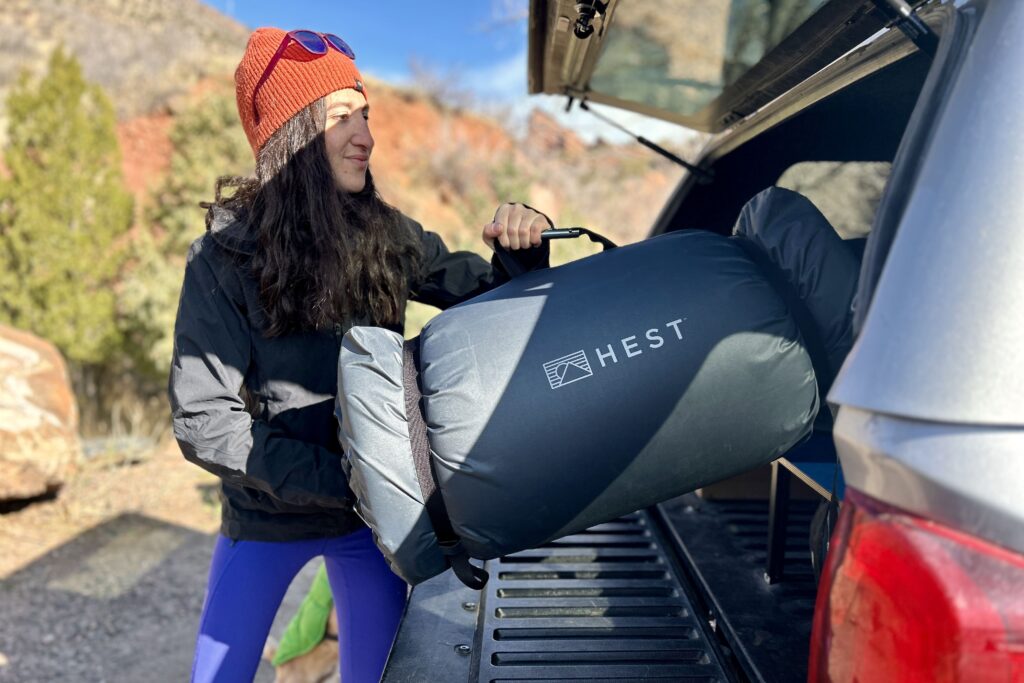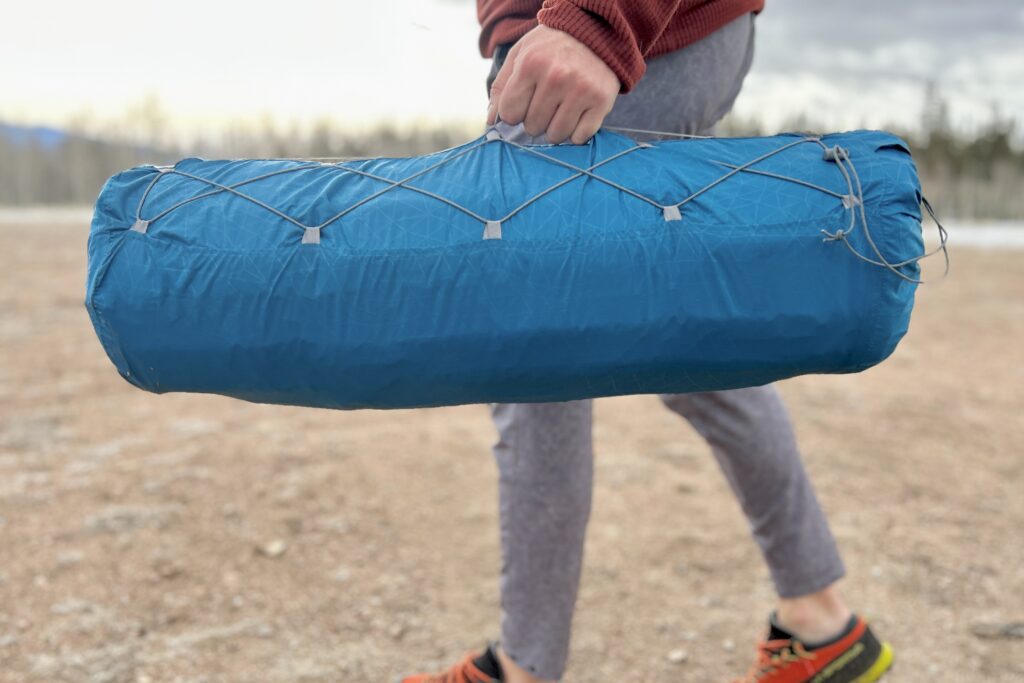
Bottom Line
The Therm-a-Rest NeoAir XTherm NXT is one of the lightest, warmest, and most durable sleeping pads we’ve tested for four-season adventures. With an extraordinarily high R-value of 7.3, you’ll stay toasty warm down to around 0°F with this pad and a quality sleeping bag. The XTherm is a favorite of Gear Analyst Casey Handley, who used it while backpacking in chilly spring and fall weather across the Sonoran Desert and on adventures in the Central Oregon Cascades.
Its three-inch thickness makes this pad a great choice for any sleeping position, and the horizontal baffles offer exceptional comfort all night long. The robust 70D nylon fabric on the bottom of the XTherm provides excellent durability against sharp rocks and frozen ground. And since it only weighs one pound – even with its impressive specs- the NeoAir XTherm is one of our top recommendations for alpinists, winter treks, cold sleepers, and gloomy forecasts.
This pad does have some downsides, though. Its pump sack is a bit cumbersome, the materials are a bit louder than we’d like, and it deflates slower than the competition. But the biggest downside of this premium pad is its premium price tag. The XTherm is one of the most expensive pads we tested, so budget-conscious campers may want to consider alternatives.
All things considered, if you’re a dedicated backpacker who hikes year-round or a cold sleeper looking for extra durability and warmth, the XTherm is undoubtedly one of the best sleeping pads on the market and will be well worth the investment.
Quick Specs
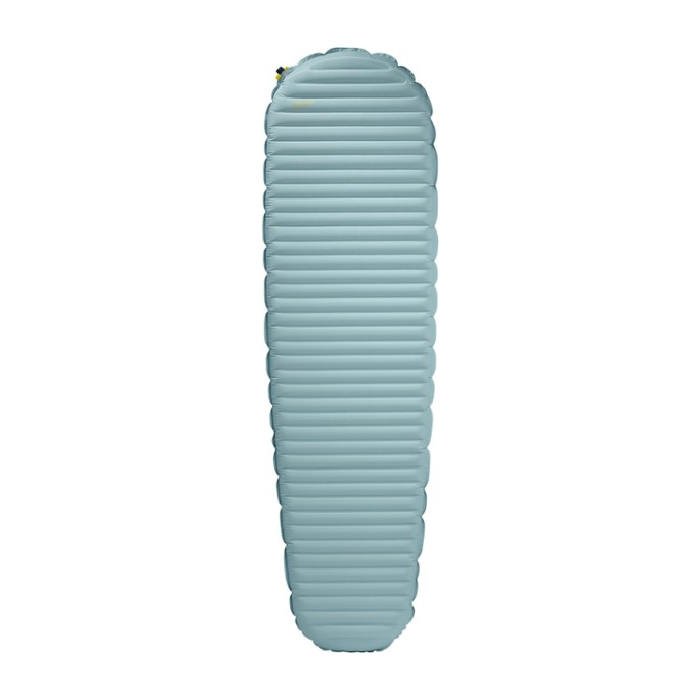
Therm-a-Rest NeoAir XTherm NXT
Best Sleeping Pad for Cold-Sleepers & Winter Backpacking
CleverHiker Rating: 4.6/5.0
Price: $240
Weight: 1 lb.
R-Value: 7.3
Thickness: 3 in.
Pros
- Exceptional warmth-to-weight ratio
- Very warm (suitable for winter use)
- Lightweight
- Above-average comfort
- Compact for a 4-season pad
- Very durable for an air pad
Cons
- Expensive
- Slower inflation/deflation
- Slight crinkle sound
- Below-average pump sack
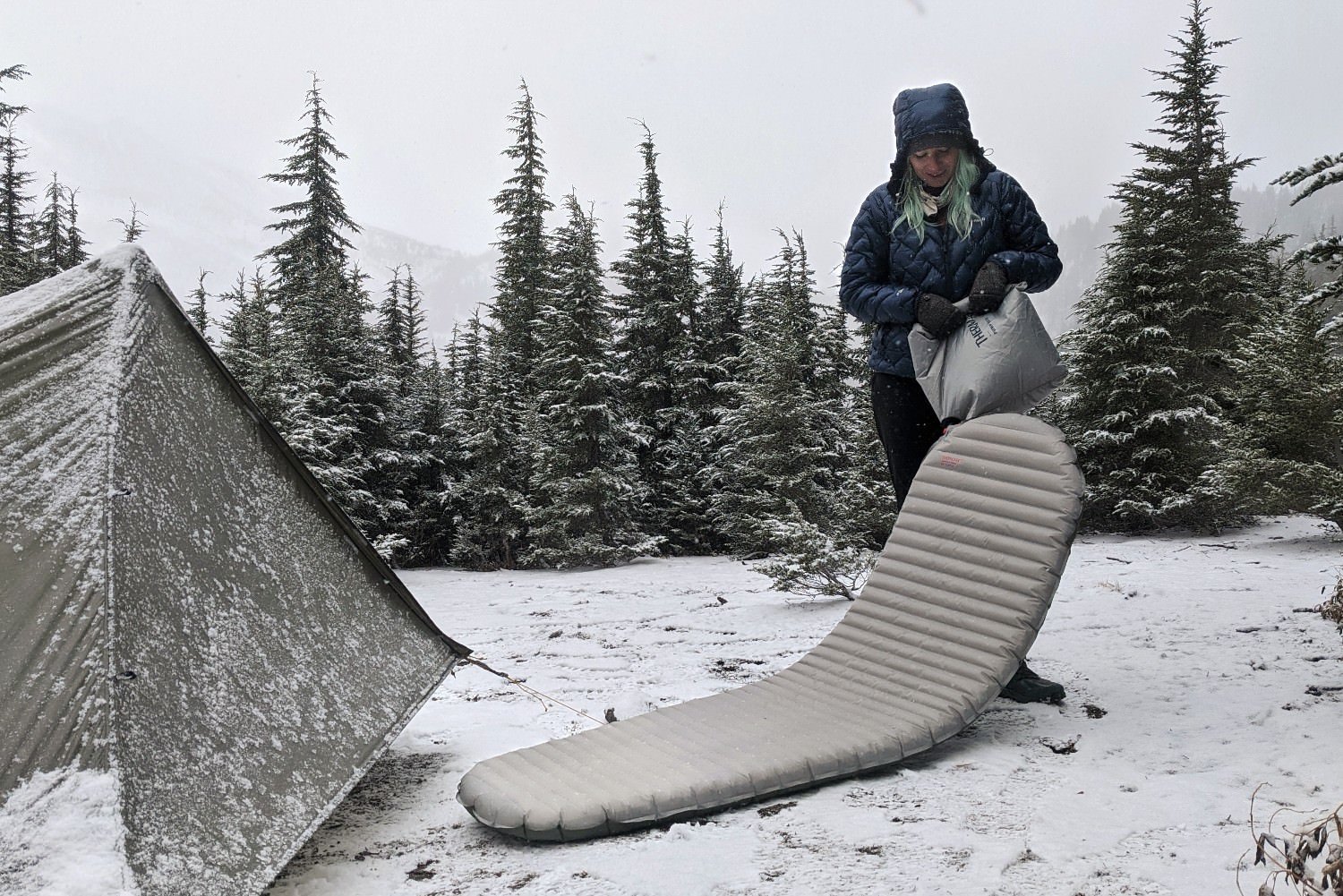
Comfort
The Therm-a-Rest XTherm NXT is an exceptionally comfortable choice for backcountry sleeping. At 3 inches thick, it’s great for all sleeping positions – which is good news for side sleepers, whose hips can bottom out on the ground with thinner pads. This pad is our top pick for cold-weather camping. Its horizontal baffles offer even support across all pressure points, and its cushy insulation offers outstanding heat retention to keep you comfy way below freezing. The thick 30D ripstop nylon on top feels soft on the skin, and it won’t snag on your base layers on chilly nights.
Since the single inflation nozzle isn’t on top of the pad but instead tucked into a side seam near the head, you won’t feel the nozzle at night. This design also means you can easily make micro-adjustments while on the pad or in your tent to dial in the perfect firmness. We also like that this pad comes in many sizes, including wide and long options, to accommodate different body shapes.
However, there are a few drawbacks to the XTherm. The main one is that it’s a bit noisier than some sleeping pads. Prior models were even louder – with annoying, loud crinkling noises when users rolled over – but we’re thankful this updated version is quieter. That said, the current iteration of the XTherm is not totally silent, so you’ll still experience the occasional noises. This could be bothersome for folks especially sensitive to noise at night or if you’re an active or light sleeper. But our testing found this to be a minor downside that didn’t bother us. The warmth and weight of the XTherm far outweigh any faint rustling noise, and all sleeping pads make a little noise.
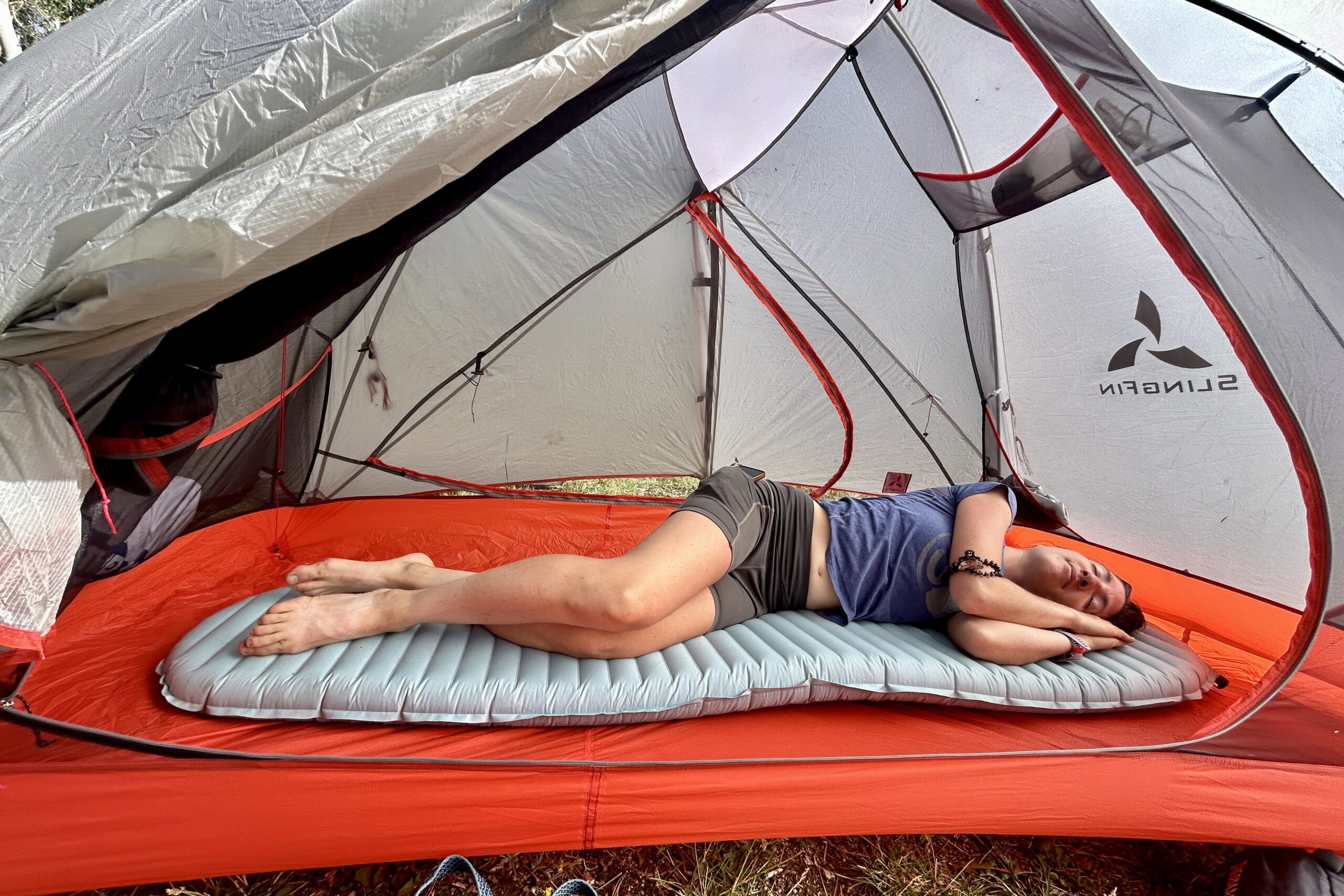
Weight & Packability
The XTherm offers one of the best warmth-to-weight ratios you’ll find anywhere – period. At only one pound, this pad is an excellent choice for four-season backpackers who want one of the warmest and most compressible pads for long-distance hiking. Don’t be fooled by its low weight, though. The XTherm can be used safely in overnight temps way below freezing. That’s especially impressive since pads in the same weight range usually offer half the R-value. Despite its beefy, high-denier nylon construction, this pad is also extremely compressible. The regular XTherm folds and rolls into a stuff sack that’s just 4.5 by 9 inches, about the size of a standard 32-ounce water bottle, so it’s fast to pack up and easy to carry for hundreds of miles.
There are a few things worth considering with the XTherm, though. Its low weight and small packed size are incredibly competitive versus 4-season pads, but some ultralight 3-season season sleeping pads are a bit lighter and pack down a little smaller. Also, the included pump sack for this pad is pretty basic and isn’t our favorite – it snaps on tightly and works well, but it’s a bit cumbersome to handle and is heavier than competitors. So, if you’re not a cold sleeper and don’t need a winter sleeping pad, the warmth and weight of this pad might be overkill. But if you’re looking for the warmest and lightest pad out there for winter, high-altitude camping, and cold sleepers, this is one of the best pads on the market, hands down.
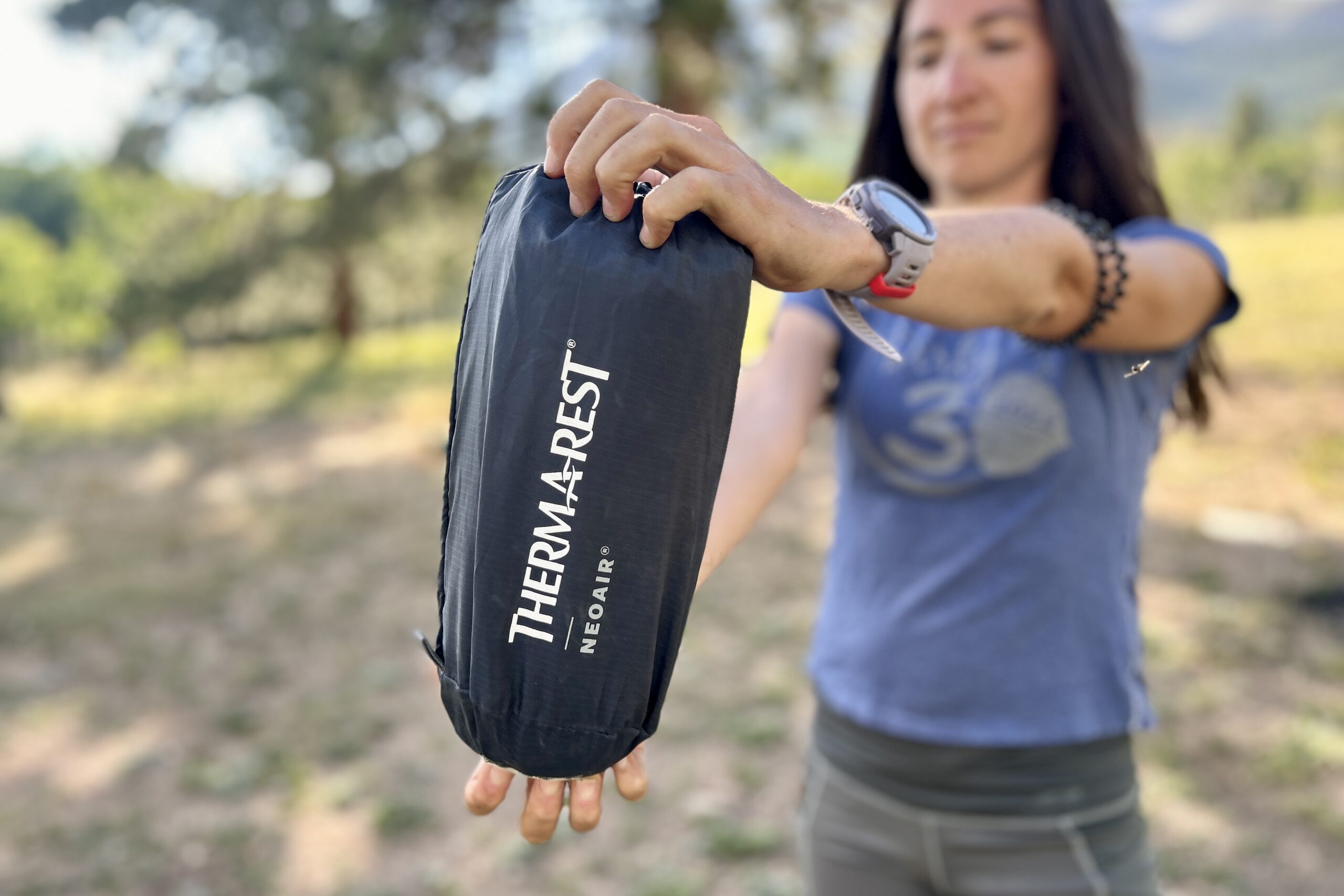
Warmth
The XTherm NXT is one of the warmest backpacking pads on the market. Its R-value is a whopping 7.3, which is very high, especially for a sleeping pad that is so light. With the XTherm, you’ll stay cozy and comfy in overnight temps as low as 0 degrees, as long as you pair it with a quality sleeping bag. Therm-a-Rest uses double-layer insulation, 3 inches of loft, and horizontal baffles to retain body heat throughout the night, so you won’t feel the cold ground or bottom out whether you’re a belly, side, or back sleeper. The burly materials also make a big difference. Thanks to super thick 70D nylon on the bottom of the pad and 30D on top, this pad is incredibly durable and outstanding at blocking out the chill. It’s great for cold sleepers year-round, but the XTherm is mostly our team’s go-to for chilly shoulder season treks and winter camping from the low open desert to thousands of feet above treeline.
The downside of such a warm pad? It’s overkill for many summer and warm weather adventures – unless you’re a really cold sleeper. The XTherm’s very high R-value is one of the best for tackling cold temps and frigid hikes, but if most of your hiking happens between June and August, this pad will be a bit heavier, bulkier, and more expensive than what you’ll typically need. But if you’re a cold sleeper or like to backpack year-round, this pad is a top performer in brutally cold conditions and will be a cornerstone of your winter kit.
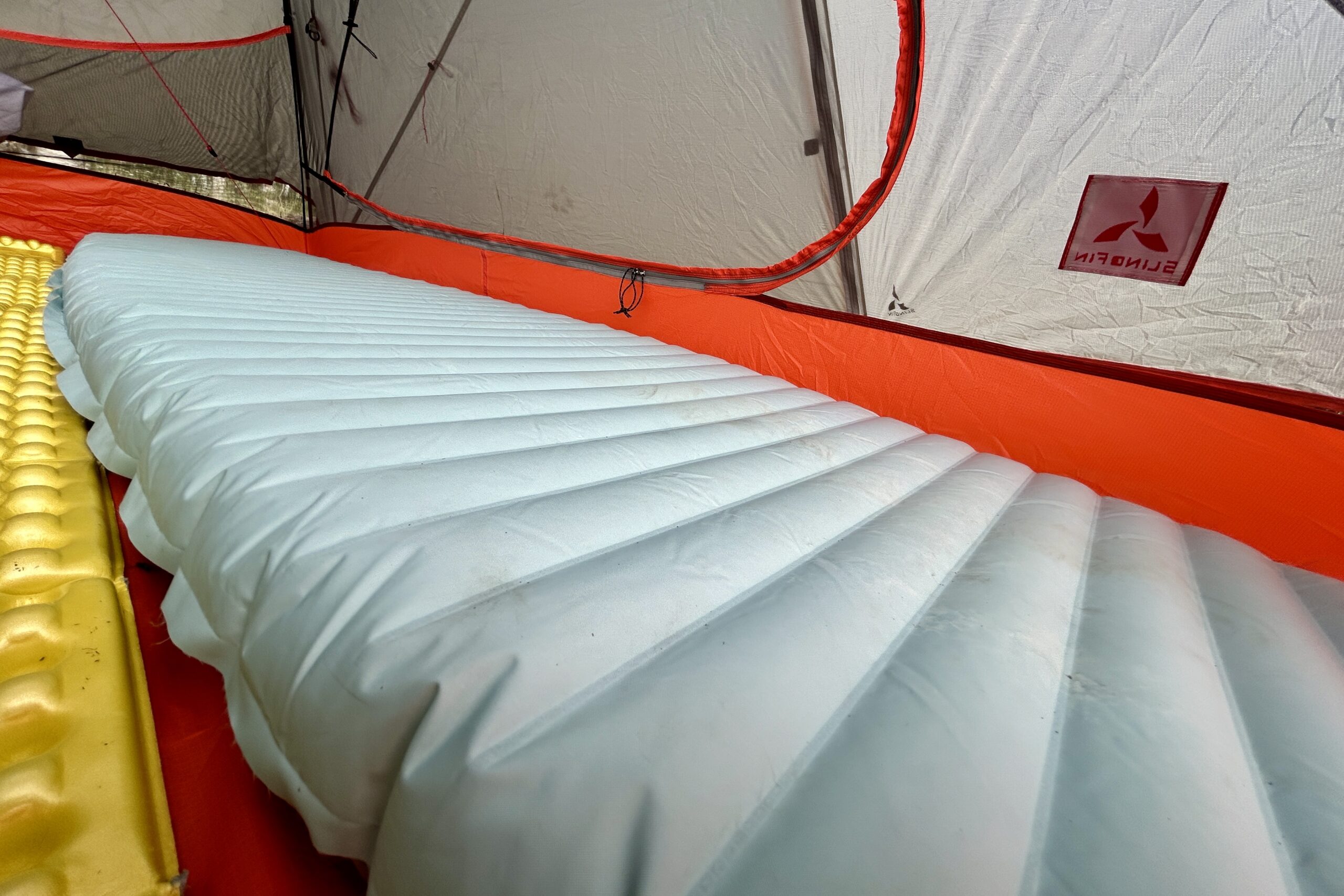
Ease of Use
The Therm-a-Rest XTherm NXT is easy to set up thanks to its simple design and functional pump sack. The WingLock valve system makes inflation easy: simply twist the nozzle to open, clip the pump sack on, and push air into the pad. This pad is three inches thick, but it only takes around six to seven full bags of air to inflate fully, and you’ll be good to go in less than two minutes. The included pump sack guarantees you won’t waste energy after a long day of hiking, and your pad won’t be filled with moisture from your breath that can lower its R-value on cold nights and cause interior mold over time. Once the XTherm is inflated, simply twist the valve to fine-tune the firmness and comfort, even while lying on it at night. Its lightweight construction means this pad folds easily, rolls up fairly fast, and you won’t be battling to put it away thanks to a stuff sack with some extra room.
Our only complaints come down to the valve and the pump sack. The XTherm has a single WingLock valve that’s durable and simple, but it deflates slower than pads with dump valves since you’re manually pushing all the air out. That means packing up is more work and can take a little longer. The pump sack works well, but it’s a little heavier and bulkier than the competition, and the wide opening makes it tricky to seal effectively while inflating. But these are pretty minor gripes – The XTherm is generally reliable and fast to deploy and pack up.
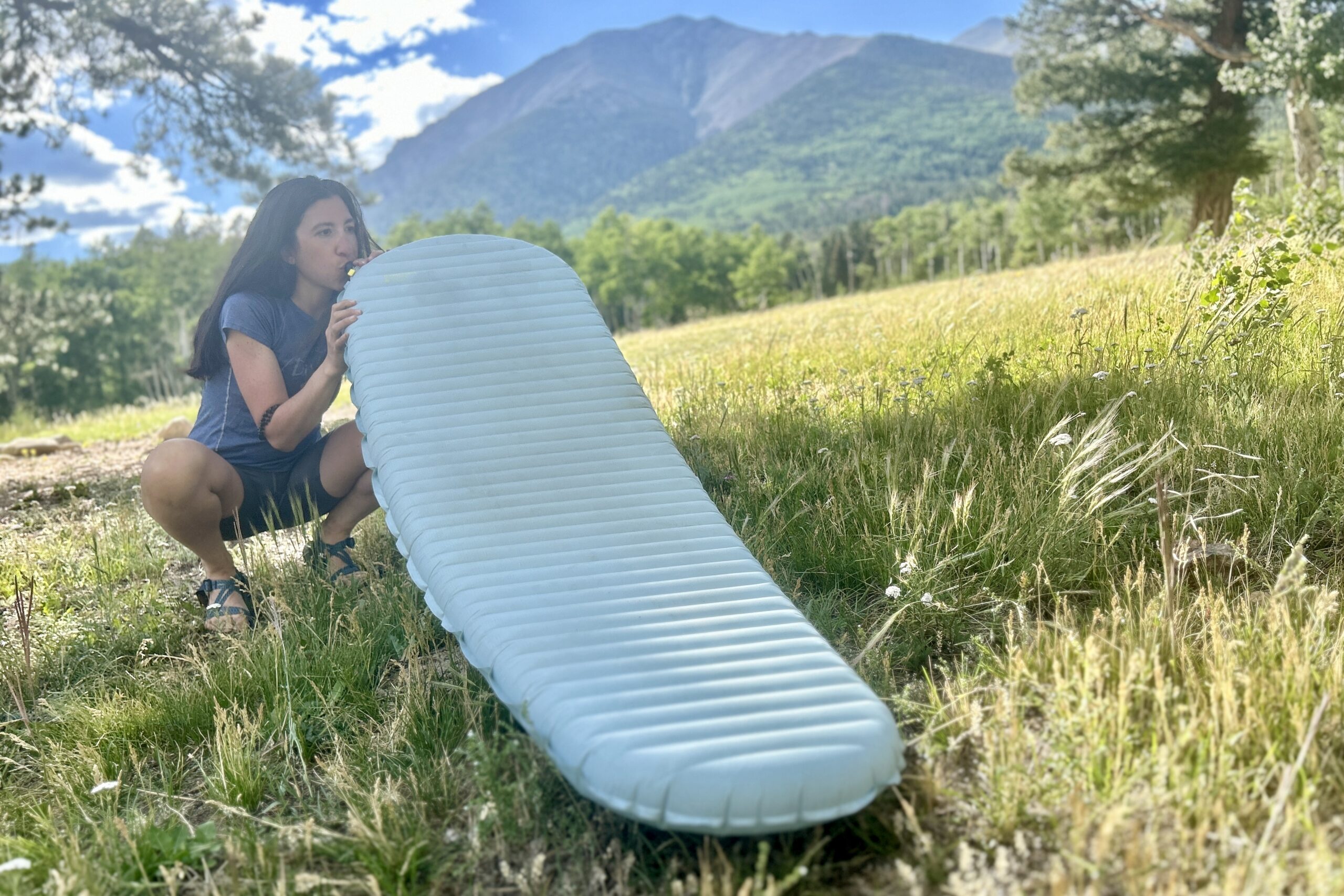
Durability
We found the Therm-a-Rest XTherm NXT to be one of the toughest air pads on the market in our testing. This thing is very durable, and it proves you don’t have to choose between durability and performance. Our team at CleverHiker has put this pad through the wringer over many years in some brutal environments – from cactus-laden deserts and jagged lava rocks to hundreds of miles of pine forest and icy mountain passes – and the XTherm just keeps going. Its 70D nylon bottom is impressively thick and offers a robust defense against punctures and wear from sharp rocks, brambles, and rough terrain. Unlike thinner pads, this fabric holds up to thousands of times inflating, deflating, rolling, and stuffing. And we love that the single WingLock valve is repairable – if it breaks, this component can easily be swapped out for a replacement, further extending the pad’s lifespan.
That said, no air pad is invincible. While the 70D nylon is much tougher than most, sharp objects, dog nails, or unlucky situations can still puncture it. Therm-a-Rest includes an effective patch kit, and we always bring it just in case. Also, burlier materials tend to weigh a bit more, so you’ll sacrifice a couple of ounces for this level of durability. That said, we haven’t run into many issues with this pad that couldn’t be quickly fixed, and if you’re tough on gear, camping in rugged terrain, or simply want gear that will last – this pad is a fantastic choice.
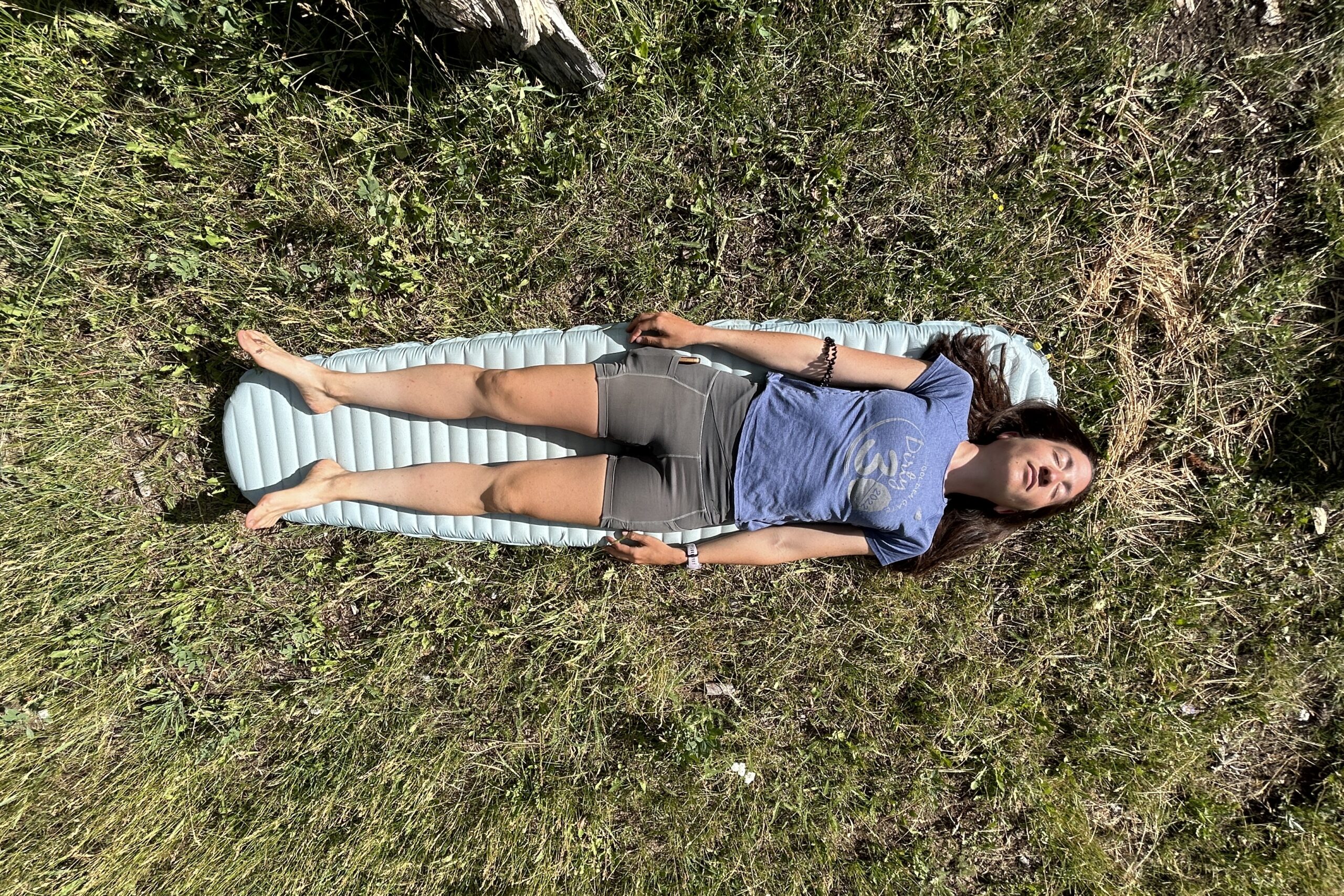
Should You Buy the Therm-a-Rest XTherm NXT?
The Therm-a-Rest NeoAir XTherm NXT is for year-round adventurers, alpinists, and ultralight backpackers who want the gold standard for warmth, comfort, and durability. Thanks to its unmatched warmth-to-weight ratio, it’s our top recommendation for cold sleepers and anyone venturing into extreme, sub-freezing temperatures. Its durable 70D nylon bottom and 30D top provide excellent protection, so you’ll have a reliable, cozy place to lay down in even the most unforgiving landscapes.
However, the XTherm is not the pad we would recommend to casual backpackers or those who camp in mild, warm weather conditions. Its burly materials and extreme insulation will be unnecessary for many folks who just need a pad for three-season camping. This pad is also one of the most expensive backpacking sleeping pad options out there, so it is a hefty investment. But if you’re a committed backcountry traveler who gets outside year-round, the XTherm is an exceptional piece of gear that will last for many years of tough use.
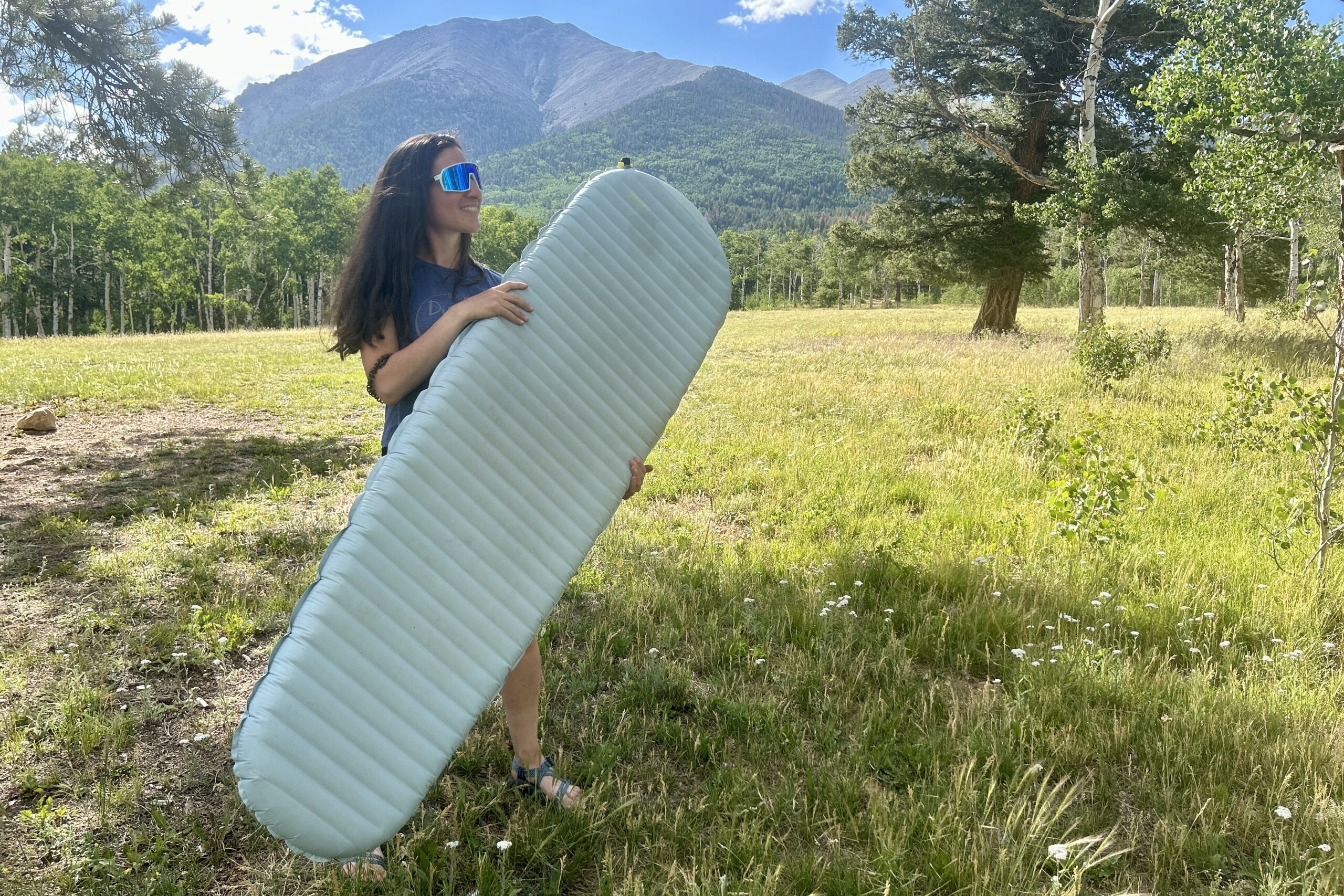
What Other Backpacking Pads Should You Consider?
Check out our complete list of the Best Backpacking Sleeping Pads for all our top recommendations.
NEMO Tensor Extreme Conditions: The NEMO Tensor Extreme Conditions sleeping pad is a very close competitor to the Therm-a-Rest XTherm NXT, built for extremely cold temperatures. It costs a bit more, adds a little weight, and isn’t quite as durable, but it does offer a higher R-value, a more efficient pump sack, and a quick-release dump valve for easy packing. The Tensor EC and the XTherm are our top picks for truly frigid conditions.
Therm-A-Rest NeoAir XLite NXT Review: This pad is a lighter version of the XTherm, so it’s perfect for warmer conditions from spring through fall. The XLite is also 3 inches thick, easy to set up, and comes in multiple sizing options. But it’s a few ounces lighter, more affordable, and has a lower R-value – perfect for three-season backpacking.
NEMO Tensor All-Season Review: The NEMO Tensor All-Season also offers a higher-than-average R-value of 5.4, so it’s a great alternative to the XTherm if you want a warm pad. The Tensor All-Season is slightly thicker, more affordable, and easier to pack up, though it won’t insulate as well in extremely cold weather.
Big Agnes Rapide SL Insulated Review: The Rapide SL Insulated is another solid choice. It has a higher R-value (4.8) than most three-season pads at a fraction of the price of the XTherm NXT. It packs up a bit smaller, is a half-inch thicker, and has side rails to help keep you centered. The downsides are that it weighs more and is less durable.


